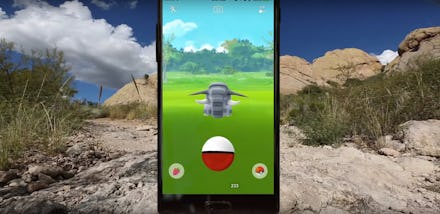'Pokémon Go' Gen 2 Update: Johto Pokémon spawns still decided by biomes, trailer suggests

If you paid close attention to the new Pokémon Go Gen 2 teaser video you probably noticed that some of the new Pokémon are grouped together into similar environments. These are called "biomes," and they utterly screw players from finishing their Pokédexes. Unfortunately, it looks like biomes aren't going anywhere in the Pokémon Go Gen 2 update.
Pokémon Go Gen 2 update: Why biomes are bad
One of the most frustrating aspects about Pokémon Go is that no one actually gets a fair opportunity to catch 'em all unless they have the ability to travel to where the Pokémon spawn. That could mean something simple like driving to a confirmed nest or using public transportation. But it can also require traveling to different cities and even countries to actually catch 'em all.
If you don't have the time or money to travel you are probably out of luck when it comes to completing your Pokédex in Pokémon Go. The reason why is biomes, and that isn't changing anytime soon.
Pokémon Go Gen 2 update: How biomes work
Your biome is decided by the immediate physical environment — desert, forest, city, beach, etc. — and plays into the way Pokémon spawn in the game. If you live near water, for instance, you probably see a healthy number of Magikarp spawning on a regular basis because it's a water Pokémon. If you live in the desert, however, you might be screwed when it comes to finding enough Magikarp to evolve a Gyarados.
Biomes don't make it impossible to catch 'em all, and you could even argue that attaching Pokémon to biomes makes it easier to complete a Pokédex since you know where to look for specific creatures — assuming you have access to that environment.
Pokémon Go Johto update: Trailer suggests biomes are here to stay
If you watch the new trailer for Pokémon Go Gen 2, you can see the biome theme repeated several times. Mountains, beaches, forests and the city are the four environments shown in the trailer. Totodile and Marill are water-type Pokémon, so they're shown on the beach.
Chikorita, a grass-type Pokémon, is shown standing in a pile of fallen leaves.
Not all of the associations make sense on the surface. Crobat is a poison- and flying-type Pokémon. What the hell does that have to do with a public park? Why Hoppip and Cyndaquil are shown in urban environments is also a mystery.
Still, the trailer certainly suggests that biomes will continue to play a large part in how Pokémon Go locks specific Pokémon to specific areas, even if the assignments don't always make sense.
More Pokémon Go guides, tips, tricks and updates
Check out Mic's guides on how to get stardust, how to determine how long it will take you to reach level 40, the kind of Pokémon you get from 10km eggs, how to create new PokéStops, how to maximize your chances of catching Pokémon and how PokéStops distribute Pokémon eggs. Also check out how to catch Gen 2 baby Pokémon, our analysis of post-balance update Chansey and Rhydon and everything you need to know about finding the long-awaited Pokémon Ditto.